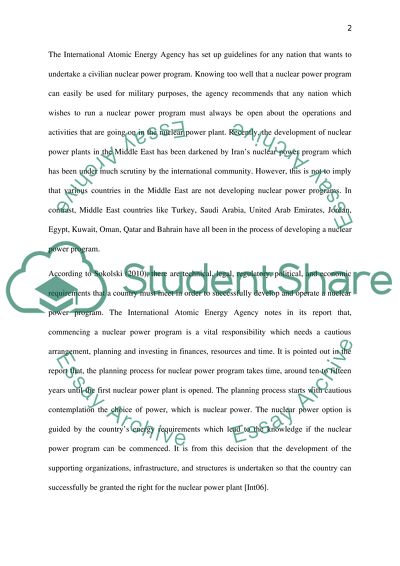Cite this document
(“To What Extent Do Middle Eastern States Have the Capacity to Develop Essay”, n.d.)
Retrieved from https://studentshare.org/social-science/1654304-to-what-extent-do-middle-eastern-states-have-the-capacity-to-develop-civilian-nuclear-power-programs-and-would-this-development-encourage-regional-cooperation
Retrieved from https://studentshare.org/social-science/1654304-to-what-extent-do-middle-eastern-states-have-the-capacity-to-develop-civilian-nuclear-power-programs-and-would-this-development-encourage-regional-cooperation
(To What Extent Do Middle Eastern States Have the Capacity to Develop Essay)
https://studentshare.org/social-science/1654304-to-what-extent-do-middle-eastern-states-have-the-capacity-to-develop-civilian-nuclear-power-programs-and-would-this-development-encourage-regional-cooperation.
https://studentshare.org/social-science/1654304-to-what-extent-do-middle-eastern-states-have-the-capacity-to-develop-civilian-nuclear-power-programs-and-would-this-development-encourage-regional-cooperation.
“To What Extent Do Middle Eastern States Have the Capacity to Develop Essay”, n.d. https://studentshare.org/social-science/1654304-to-what-extent-do-middle-eastern-states-have-the-capacity-to-develop-civilian-nuclear-power-programs-and-would-this-development-encourage-regional-cooperation.


